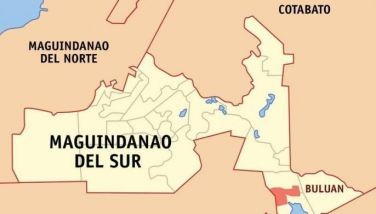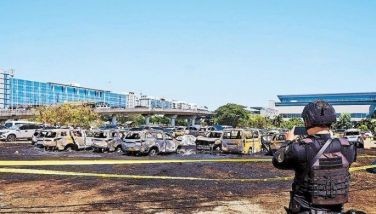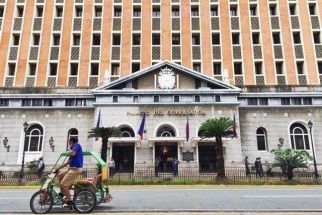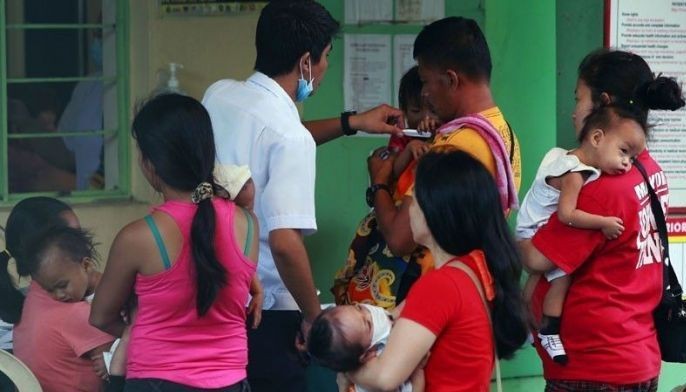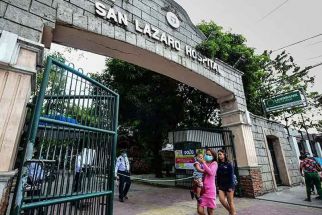BFAR: Plastic, steel wires killed whale in Samal
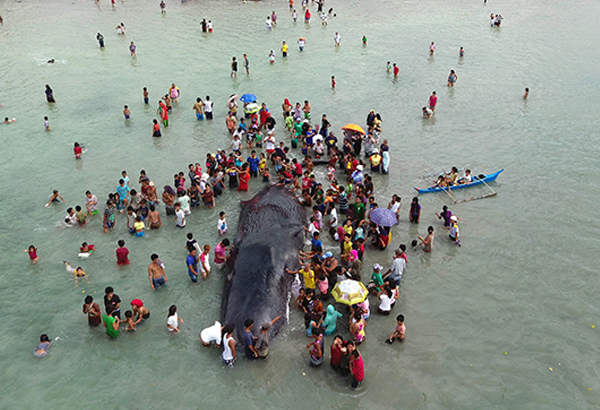
Residents gather around a 38-foot juvenile sperm whale, which washed ashore on Samal Island in Davao del Norte over the weekend. A Bureau of Fisheries necropsy report said the whale died from ingesting toxic materials, many of which were found in the mammal’s stomach such as plastic products, fish hooks, rope and steel wires. DEAN ORTIZ
DAVAO CITY, Philippines – Garbage and toxins were found inside the stomach of a 38-foot juvenile sperm whale that was beached offshore in the Island Garden City of Samal over the weekend.
A backhoe had to be used to pull its carcass to the shore of Barangay Miranda, Babak district.
Based on experts’ estimate, the whale may possibly have been seven years old or more.
The Bureau of Fisheries and Aquatic Resources (BFAR) said in its necropsy report that various toxic foreign contents were found inside the stomach of the distressed mammal such as plastic, fish net and hooks, a piece of hard wood with nail, rope and steel wire – all ultimately causing its premature death.
It added that the whale’s stomach also contained fish eyes, fish bones and cartilage, different sizes of squid beaks and numerous stomach worms.
Darrell Dean Blatchley, cetacean expert and proprietor of D’Bone Collector Museum, said the cause of death must have been internal due to the lack of evident physical injuries.
He added that the Davao Gulf is host to at least 18 of 27 species of whales seen in the country.
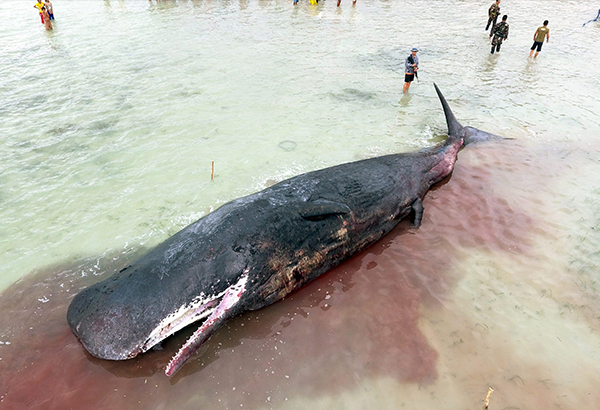 Residents look at a dead juvenile sperm whale on Samal Island in Davao del Norte on Saturday. DEAN ORTIZ
Residents look at a dead juvenile sperm whale on Samal Island in Davao del Norte on Saturday. DEAN ORTIZBlatchley’s museum actually houses 53 of the total 58 whale skeletons that he has preserved through the years.
“Among the 53 whales and dolphins recovered in the last seven years in Davao Gulf, only four died due to natural causes. The rest of them died because of plastic waste, were caught by nets or killed through dynamite fishing or were unable to feed in the sea. A majority of them died because of humans,” Blatchley said.
The dead whale had to be deboned and transported to a sanitary landfill where its remains will be buried.
DNA samples were taken from the whale and turned over to the BFAR for further study by experts, while the skeleton will be brought to a museum in Davao for cleaning and processing.
“Then it will be sent back to Samal where it will be placed in an education center so people will have a view of the kind of animals they could encounter around Samal and the Davao Gulf,” Blatchley said.
He added that it would also teach people of the need to “take care of our environment.”
The preserved remains of the whale will be the largest on display in the country, he also said.
- Latest
- Trending
















